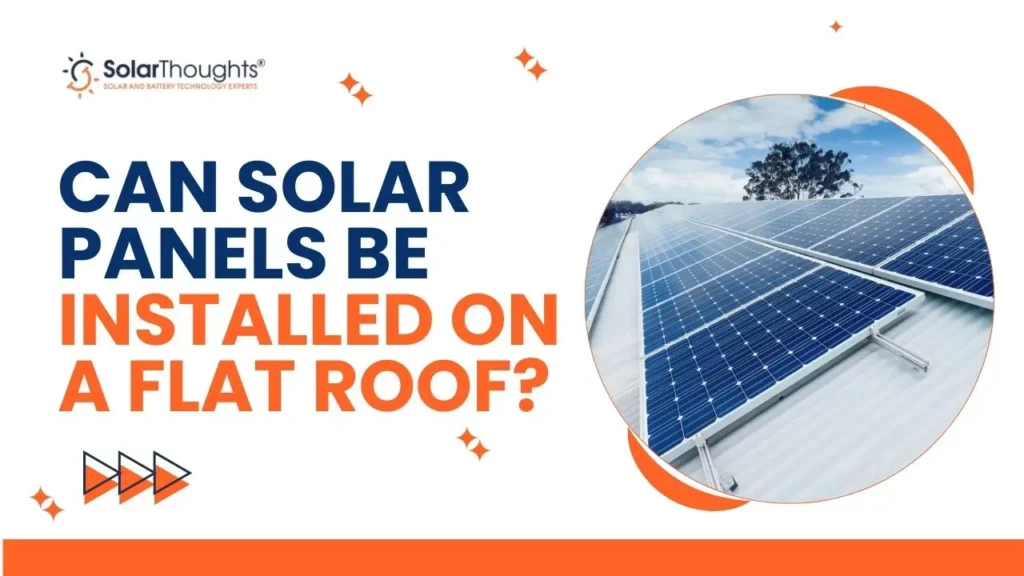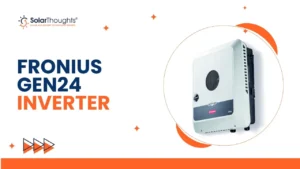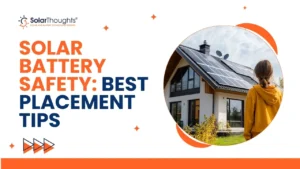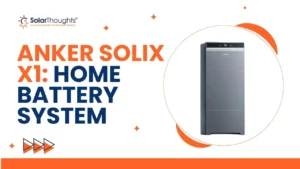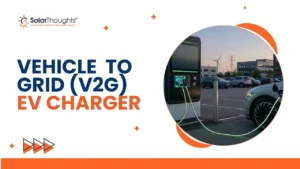Solar panels work great on flat roofs and might give you some unexpected benefits you haven’t thought about.
Table of Contents
ToggleMost people believe angled installations are best, but flat roof setups come with their own perks. Flat roofs give you plenty of room to set up multiple solar arrays. A completely flat panel setup in Sydney produces about 10-12% less power compared to north-facing panels tilted at 33 degrees. This happens because flat panels don’t catch sunlight as well as angled ones.
Keeping your panels clean becomes crucial with flat installations. Google found that their flat panels lost 50% output after 15 months without cleaning. Their tilted panels stayed clean naturally from rainfall. Australian solar experts recommend adding at least a slight tilt to help panels self-clean when it rains.
The space advantage could outweigh the power loss for many building owners. You can fit almost twice as many panels with just a 10% drop in efficiency – a trade-off that often makes financial sense.
Ready to put solar panels on your flat roof? Let’s look at your mounting choices and how to get the best performance.
Can You Install Solar Panels on a Flat Roof?
Solar panels on flat roofs? Many homeowners ask this question. The answer is a resounding yes. Flat roofs actually give you several unique advantages when installing solar panels.
Flat roof solar panels are viable
Flat roofs create perfect opportunities for solar panel installations. These surfaces give you more flexibility than pitched roofs. You can place solar arrays anywhere without worrying about chimneys or skylights getting in the way. The panels can face any direction to catch maximum sunlight throughout the day.
Your flat roof likely has more usable space than a pitched one of the same size. This extra room lets you install larger solar arrays that generate more power. The installation process becomes easier and safer, too. Workers move around freely without special equipment or safety harnesses. Labor costs often drop because of this simple setup, even though you’ll need some extra mounting equipment.
The best part? You can angle your panels just right. Flat roofs let you set the perfect tilt between 10-40 degrees to catch the most sunlight. So flat roof solar systems often outperform their sloped counterparts and save more energy over time.
Common misconceptions about flat solar panels
People have quite a few wrong ideas about flat roof solar installations. The biggest myth? Flat roofs can’t support solar panels. The truth is, they work just as well as pitched roofs and come with their own perks.
Leak concerns come up a lot too. All the same, modern installations use ballasted systems that sit on top without making holes in your roof. Sometimes holes are needed, but they’re sealed properly to keep water out.
Some folks think flat roofs don’t get enough sun. The reality? With the right tilt and direction, these panels soak up plenty of sunlight all day long. The idea that solar panels only work on slopes is just plain wrong.
The last myth assumes flat roof installations belong only on commercial buildings. While warehouses and factories use them often, many homes with flat roofs benefit from solar power too.
Types of Mounting Systems for Flat Roofs
Your flat roof’s solar panel installation needs the right mounting system. Each option brings unique benefits that depend on your roof’s condition and power requirements.
Ballasted mounting systems
Ballasted systems secure panels with weights like concrete blocks without drilling into your roof. These systems add about 2-6 pounds per square foot, which most modern roofs can handle easily. The panels sit at a fixed tilt angle up to 10 degrees to capture maximum sunlight and resist wind effectively.
The system’s biggest advantage lies in its simple installation process. You just need to position the panels and racks on the roof surface and add ballasts. This approach prevents water leaks, rust, or structural issues and keeps your roof’s integrity intact.
Fixed tilt systems
Fixed tilt mounts give you a cost-effective solution that works great on concrete or other strong flat roofs. Once installed, these systems keep panels at a set angle that stays constant.
The FD3-S Premium Line and similar fixed tilt systems work best in locations where the sun maintains a steady position year-round. Property owners love these systems because they need minimal upkeep after installation – perfect for a “set and forget” approach.
Adjustable tilt systems
Adjustable tilt systems let you maximize energy production through flexible panel positioning. You can change the angles as seasons shift to catch optimal sunlight throughout the year.
NOVA’s Adjustable Tilt System comes with tilt options from 10°-15°, 15°-30°, and 30°-60°. This flexibility makes seasonal adjustments easy. The system performs best on roofs with plenty of space and good access for maintenance.
Hybrid systems for high-wind areas
Hybrid mounts blend ballasted and anchored designs to handle challenging conditions. These systems shine in windy areas or on uneven roof surfaces.
The hybrid system’s strength comes from its balanced design that uses weight distribution and strategic anchor points. Your panels stay secure even in rough weather. Professional installation helps maintain proper waterproofing since some roof penetration might be needed.
Factors to Consider Before Installation
You need to check several important factors before installing a solar system on your flat roof. This will ensure your system works at its best and stays safe for years to come.
Roof load capacity and structure
Your roof’s structural integrity needs evaluation before adding solar panels. A typical solar panel weighs 18-20 kilograms, and mounting hardware adds extra weight. The total installation can add 200-300 kilograms to your roof. Solar arrays usually increase the static load by 10-15 kg/m². Roofs older than 20 years should get a professional inspection. The roof’s material plays a big role in its strength – metal roofs are usually stronger than tiles or shingles.
Local climate and wind zones
Your location determines specific installation requirements. Properties outside Wind Region A (Sydney, Melbourne, Adelaide, Perth, and Canberra) must use penetrating attachments to secure racks. Region A allows ballasted systems as an option. Areas with extreme weather can benefit from hybrid mounting systems that combine ballasted and anchored designs. Flat roof systems in hurricane-prone areas need extra attention because wind can lift underneath panels.
Sunlight exposure and shading
Panel placement is key to capturing maximum sunlight. North-facing panels get the most sunlight throughout the day. Panels facing east work better in the mornings, while west-facing ones produce more power in the afternoons. Trees, buildings, or nearby structures can substantially reduce efficiency. Flat roofs need proper panel spacing to avoid self-shading – experts recommend about one meter between rows.
Maintenance and cleaning needs
Flat roof panels need more frequent maintenance than tilted ones because rain can’t clean them naturally. They collect more debris, dust, and bird droppings over time. You should get professional cleaning every two years and regular checks from a licensed electrician. The installation plan should leave enough space for maintenance crews – residential setups need about 1 meter between panels and roof edges.
Performance and Cost Tradeoffs
Solar panel installation on flat roofs needs careful evaluation of costs and performance benefits.
Flat vs. tilted solar panels
The choice between flat and tilted installations comes with important trade-offs. Dirt tends to accumulate more on flat installations since rain can’t wash away debris effectively. Tilted systems let rainwater naturally clean the panels, which means less maintenance work. The flat setup might give you more power in summer, though winter output drops significantly.
Solar panel angle efficiency loss
Systems with a pitch between 22° and 30° generate about 10% more power than flat installations throughout the year. The power difference becomes clear in winter – flat systems produce about 3 kWh less power each day compared to tilted ones. South-facing panels work best at angles between 30-40 degrees to catch maximum sunlight.
Maximizing ROI with limited roof space
Limited roof space makes flat installations an attractive option. You can fit almost double the number of panels when they lie flat instead of tilted, since tilted panels need extra space between them to avoid shadows. This extra capacity usually makes up for the 10% power loss. Flat setups also cost less than tilted systems, which means you’ll get your money back faster despite slightly lower efficiency. Systems that can adjust their tilt boost yearly production by 15-22%, but they cost more upfront.
Conclusion
Flat roof solar panels come with many advantages, despite what people commonly think. A completely flat setup might reduce power output by 10-12%, but this makes financial sense because you can fit almost twice as many panels. The flat surface also gives you more flexibility to position panels without dealing with roof obstacles.
Your choice of mounting system will affect your system’s performance and roof health. Ballasted systems keep your roof intact without penetration, while fixed tilt options are cost-effective ways to get consistent sun exposure. You could also go with adjustable tilt systems that maximize energy production as seasons change, but these need more maintenance.
The installation process needs careful planning. Your roof must be strong enough to handle the extra 10-15 kg/m² from solar arrays. Local climate and wind zones play a crucial role in picking the right mounting options. A thorough sunlight analysis helps you place panels in the best spots, and a solid maintenance plan keeps your system running efficiently.
Flat roof solar setups are a great alternative to traditional pitched roof systems. These panels need more frequent cleaning since they don’t clean themselves as well, but the extra usable space makes up for this drawback. The best choice between flat or tilted panels comes down to your situation – available space, weather patterns, and maintenance priorities. A well-planned and properly installed flat roof system will generate clean, renewable energy for decades.
Looking for reliable solar panel installation in Gold Coast? Call us today and start saving on energy.
FAQs
Q1. Can solar panels be effectively installed on a flat roof?
Yes, solar panels can be effectively installed on flat roofs. In fact, flat roof installations often perform better than those on sloped roofs, offering more flexibility in panel placement and orientation. While there may be a slight efficiency loss compared to tilted installations, the ability to install more panels often outweighs this drawback.
Q2. How are solar panels secured on a flat roof?
There are several mounting options for flat roofs, including ballasted systems that use weights to secure panels without penetrating the roof, fixed tilt systems with a predetermined angle, adjustable tilt systems for optimizing sun exposure, and hybrid systems for high-wind areas. The choice depends on factors like roof structure, local climate, and maintenance needs.
Q3. What factors should I consider before installing solar panels on my flat roof?
Key considerations include your roof’s load-bearing capacity, local climate and wind conditions, sunlight exposure and potential shading, and maintenance requirements. It’s also important to assess your roof’s structural integrity and ensure proper waterproofing measures are in place.
Q4. How does the performance of flat roof solar installations compare to tilted ones?
Flat roof installations typically produce about 10% less energy than optimally tilted systems. However, they often allow for more panels to be installed, potentially offsetting this efficiency loss. Flat installations may perform better in summer but less efficiently in winter compared to tilted systems.
Q5. What maintenance is required for solar panels on a flat roof?
Solar panels on flat roofs generally require more frequent cleaning and maintenance than tilted installations, as they don’t benefit from natural rainfall cleaning. Professional cleaning every two years is recommended, along with regular inspections. It’s important to ensure easy access for maintenance when planning the installation.
Our Popular Services
Top-rated solar panels company in Brisbane | Solar Panel Installation in Gold Coast | Upgrading existing Solar system | Solar Panel Repairs and Maintenance | Solar Panel Cleaning Service | Solar Battery Installations | Solar Inverter Installations

